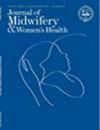Conservative Interventions for Urinary Incontinence on Postpartum Women: A Systematic Review and Meta-Analysis
Abstract
Introduction
Urinary incontinence (UI) is common in postpartum women and can lead to a reduced quality of life and withdrawal from fitness and exercise activities. Conservative management interventions such as pelvic floor muscle training (PFMT), use of vaginal cones, and biofeedback have been recommended as first-line treatment. We aimed to explore the effects of conservative interventions on UI rate, severity, and incontinence-specific quality of life in postpartum women with UI.
Methods
Nine databases were searched from inception to August 2022: PubMed, EMBASE, Web of Science, Cochrane Central Register of Controlled Trials, CINAHL, Wanfang, China National Knowledge Infrastructure, China Biological Medicine, and VIP Journal Integration Platform. Randomized controlled trials examining the effects of conservative interventions on postpartum UI were included.
Results
Initial searches produced 1839 results, of which 17 studies were eligible. All included studies had a low to moderate risk of bias. Supervised PFMT and use of a vaginal cone were more effective than individual PFMT in decreasing rates of UI (odds ratio, 0.29; 95% CI, 0.14-0.61). Individual PFMT combined with acupuncture (mean difference, −1.91; 95% CI, −2.46 to −1.37) or electroacupuncture and supervised PFMT combined with moxibustion were more effective than individual supervised PFMT alone in improving the severity of symptoms. Furthermore, electrical stimulation and biofeedback combined with acupoint stimulation or core training were more effective than electrical stimulation and biofeedback alone. For improving the incontinence-specific quality of life, supervised PFMT was more efficacious than individual PFMT; electrical stimulation and biofeedback plus core training were more beneficial than electrical stimulation and biofeedback alone.
Discussion
Supervised PFMT and use of a vaginal cone were more beneficial in decreasing rates of UI compared with individual PFMT. Superior effects in decreasing UI severity may be achieved by combining PFMT or electrical simulation and biofeedback with other therapies. Electrical stimulation and biofeedback plus core training, as well as supervised PFMT, are most effective in improving incontinence-specific quality of life. Further research is required to provide more evidence on the efficacy of these therapies.

 求助内容:
求助内容: 应助结果提醒方式:
应助结果提醒方式:


